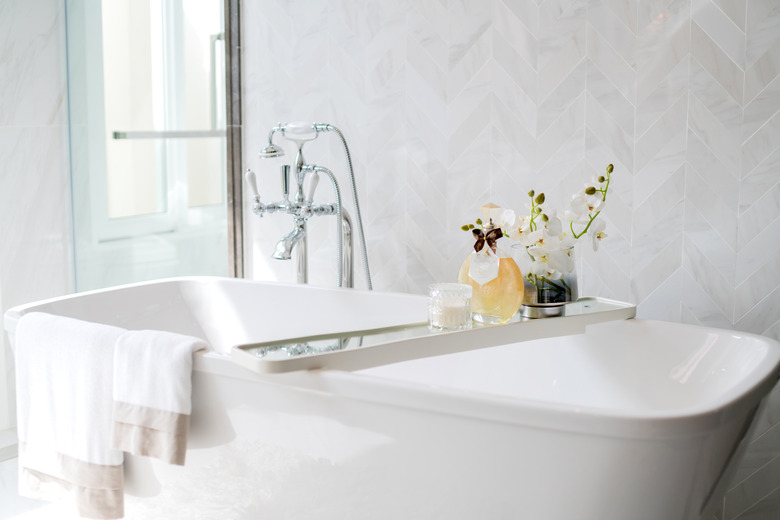Capacity Of The Average Bathtub
We may receive a commission on purchases made from links.
Many people enjoy baths. They're undeniably relaxing, offering a meditative moment during a busier and more stressful lifestyle. But baths are also known to be one of the biggest producers of wastewater within the household. When compared to a shower, taking a bath can massively boost your water usage. This is problematic both for your finances and for the environment.
It's also important to know your bathtub's capacity so that you're aware of the potential weight that your floor may have to hold. Knowing the capacity of your bathtub can help you better understand your water usage, which may motivate your efforts to reduce your monthly bill.
Bathtub Size Varieties
Bathtub Size Varieties
The size of a bathtub can obviously have an effect on its water capacity. Home Depot explains that the standardized bathtub size is 60 x 32 inches. This is the width and length of a one-person bathtub, but the depth can be subject to some variation.
As Victoria Plum explains, corner and freestanding baths can have huge differences in their tub capacity. However, if you're looking to work out your bathtub's water capacity, you can measure the dimensions of your tub and look it up online to get an estimate. This can be a great place to start in terms of saving water.
Calculating Bathtub Capacity
Calculating Bathtub Capacity
Bathtub capacity is calculated for an empty bath, so when someone is actually bathing and displacing the water, the capacity will be a fair bit lower. While Badeloft explains the capacity of a standard small bathtub is around 40 gallons, the average person will only have around 30 gallons of water in their tub. This will allow space for them and give enough leeway for adequate movement without overflowing the tub.
It's also worth considering your personal preferences when looking at your bathtub capacity. While many people favor deeper baths, some prefer less water in the tub. Having slightly shallower baths can have a large effect on water usage over time.
How to Save Water
How to Save Water
If you want to save water but are unwilling to totally cut baths out of your life, there are things you can do. For example, reducing your baths to just one a week (or fewer) and showering on the off days can have a surprisingly big effect on your water usage.
It's important to think about the length of your showers as well. Home Water Works explains the average shower of just under eight minutes uses almost 16 gallons of water — so if you're showering for over 16 minutes, it's likely you're using about as much water as you would in a bath anyway. The U.S. Environmental Protection Agency also recommends installing a WaterSense showerhead to help cut your water usage.
When you do choose to have a bath, you can often recycle your bath water, known as gray water, although it's important to follow any regulations governing gray water use in your area. For example, you might be able to reuse bath water to irrigate the soil in your garden, which would help minimize the environmental effects of your baths.
